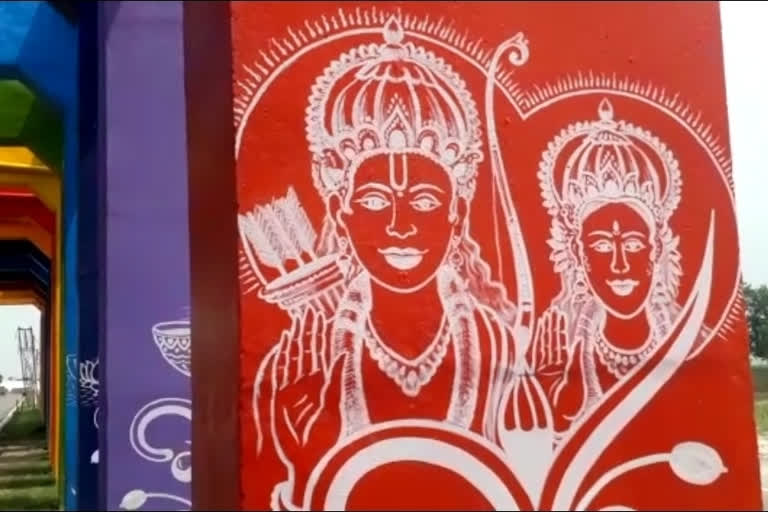Hyderabad: When Prime Minister Narendra Modi lays the foundation of the Lord Ram temple at Ayodhya on August 5, he would have hopefully closed the lid on the more than 50-years-old and probably the most complicated and violent communal issue.
Building the Ram temple was always close to the heart of the Sangh Pariwar, so much so, that it figured prominently in all recent election manifestos. They however, were clueless about how to achieve their objective. Most of the efforts were around round table talks - a dozen of them were held in the interim period but without a result.
It needed a Narendra Modi to return for the second term with a thumping majority to set the stage for the final verdict. Modi decided to take the Supreme Court route. A five member Constitution bench headed by the Chief Justice just took 40 days to unanimously decide the case which couldn't be done for decades.
The Sangh Pariwar had chosen the Ram Mandir/Babri Masjid issue as a potential Hindutva cause, way back in the early 1980s. The Vishva Hindu Parishad (VHP) held a massive demonstration of Sangh Pariwar workers on the banks of the Saryu River at Ayodhya in January 1984. The theme slogan of the demonstration, "Taala kholo taala kholo, janmabhoomi ka taala kholo."


The BJP took a piggyback ride on this VHP agitation. The opening of Ram Janmabhoomi locks and allowing praying rights to Hindus by a Faizabad court in February 1986 added more shrill to the VHP agitation. In August 1989, the Allahabad High Court took over the hearing of the title suit in Ram Janmabhoomi/Babri Masjid case.
Then came a crucial turn in the history of this case in November 1989. Just before the general elections, the then Rajiv Gandhi government allowed VHP to perform puja near the disputed site. The VHP started building up a hysteria around the temple issue. In November 1990, lakhs of Sangh Pariwar activists arrived in Ayodhya despite the government ban. When they started marching towards the disputed shrine, then Chief Minister Mulayam Singh Yadav ordered firing at the defiant crowd. More than 30 people died in the police firing.
Read: Ram Mandir 'Bhoomi Pujan': All you need to know about the ceremony
Nonetheless, the BJP gains were significant in the Lok Sabha elections of 1991 in which it won 45 seats, but in Vidhan Sabha BJP took a gigantic lead from 57 to 193 seats.
The Congress leadership had run out of ideas about how to stop the BJP's roaring chariot. Advani's rath yatra from Somnath to Ayodhya in September 1990 drew huge crowds and helped a Hindu wave to sweep across. Though most of the crucial turning points in the disputed case including the opening of locks were provided by the Congress, the Sangh Pariwar had always been alert on taking advantage of the situation.
Prime Minister V.P. Singh at least had a tangible plan to dent the Sangh Pariwar support. He brought in Mandal to counter Kamandal. On 7 August 1990, the V.P. Singh government accepted the Mandal Commission's recommendations and announced that it would implement the reservation scheme – under which 27 per cent jobs would be given to members of Other Backward Classes. The mandal plan worked to some extent but failed to tame the BJP.
The final showdown occurred on December 6, 1992 when the disputed mosque was razed to the ground. Several journalists were overpowered by kar sewaks, their tape recorders and cameras were snatched away and we were made to sit on the floor, abused till the huge structure was brought down in a matter of about four hours. In this case also, Congress Prime Minister Narsimha Rao's inaction will always be worth examining.
Read: 'Deepotsav' in Ayodhya to mark Ram Temple 'bhoomi pujan'
In 1993, P.V. Narsimha Rao acquired 67 acres of land near the disputed site. The disputed site had been completely rendered out of bounds after the demolition in 1992. In June 2009, the Liberhan Commission submitted its report accusing 68 Sangh Pariwar leaders including Lal Krishna Advani, Murli Manohar Joshi, Kalyan Singh and Uma Bharti.
On September 30, 2010, another nationwide commotion resulted when the Allahabad High Court delivered a majority judgment for three-way partition of the disputed site. But the Supreme Court stayed the High Court judgement on May 2011.
On January 2019, a Constitution Bench of five judges headed by Chief Justice of India Ranjan Gogoi started hearing the case and suggested mediation. After the failure of mediation efforts, Supreme Court started day-to-day hearing from August 6, 2019 and delivered its judgment as promised on the 40th day. A trust has been formed to supervise the construction of a new Ram temple at Ayodhya for which the foundation will be laid on August 5, 2020.



